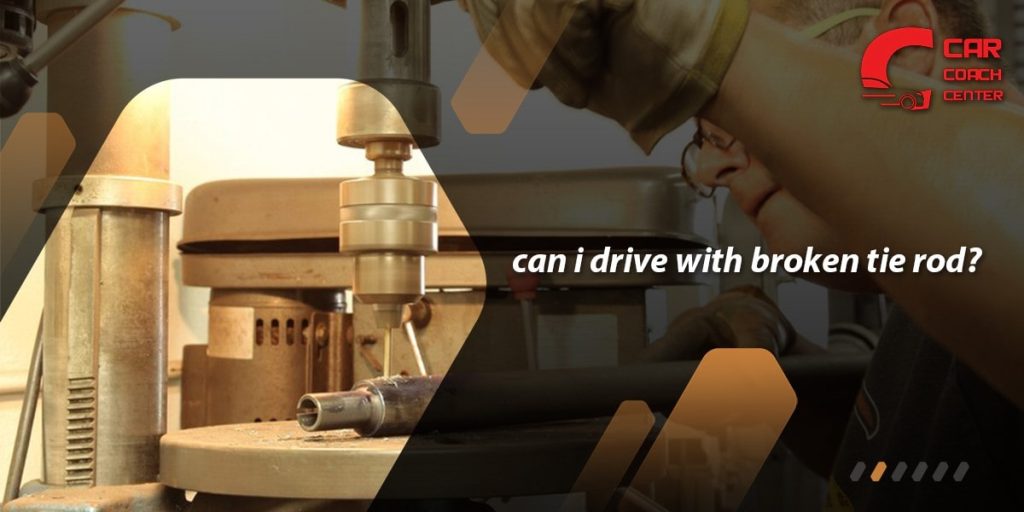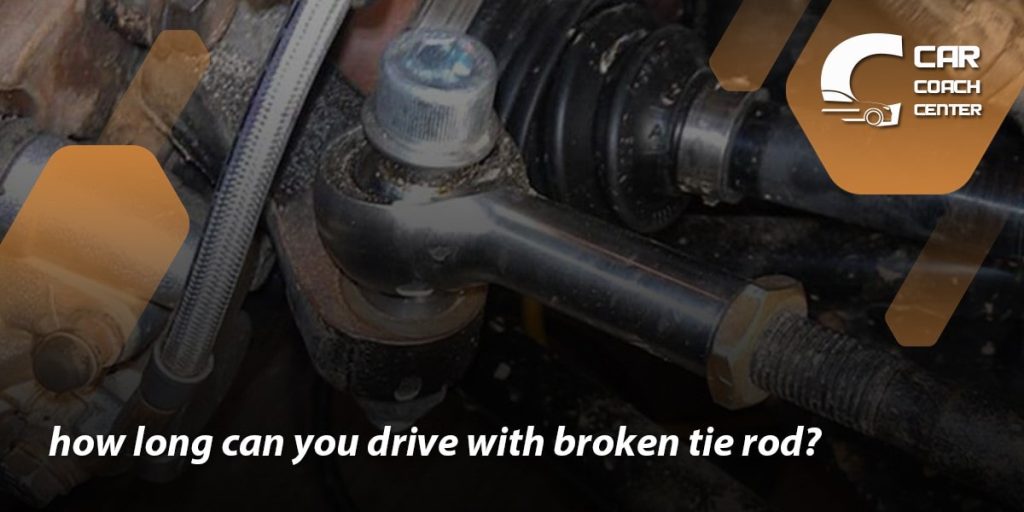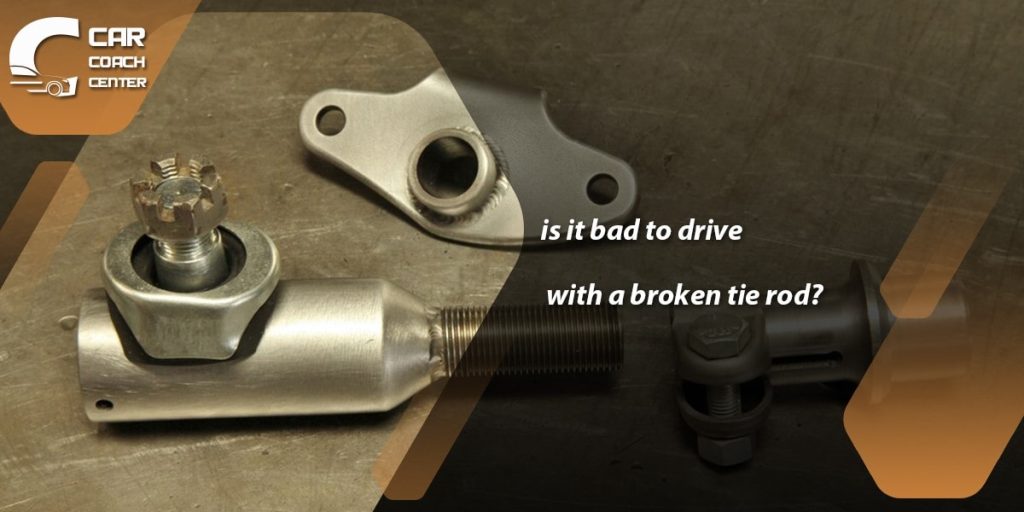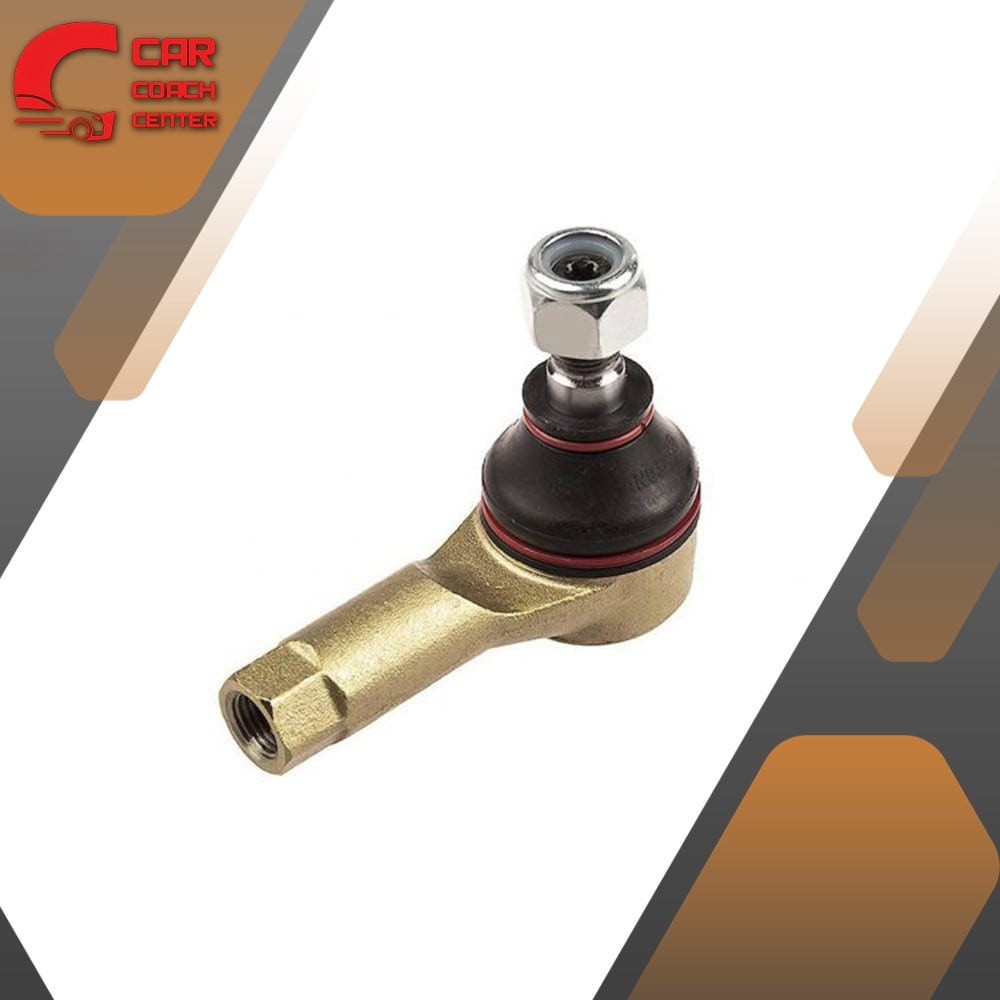Can You Drive With A Broken Tie Rod
Picture this: you’re cruising down the road, enjoying the wind in your hair and the freedom of the open road. Suddenly, you hear a loud clunking noise coming from beneath your vehicle. Your heart skips as you realize your car’s steering might be seriously wrong.
One potential culprit that can wreak havoc on your ability to control your vehicle is a broken tie rod. The tie rod is essential to your car’s steering mechanism, connecting the steering rack to the wheels. Its primary function is to ensure smooth and precise steering, allowing you to navigate turns and maintain stability.

However, when a tie rod breaks, it can spell trouble for both your car and your safety. In this article, we will explore the risks and consequences of driving with a broken tie rod and provide insights into identifying the issue, handling the situation, and the importance of regular maintenance to prevent such mishaps. So, buckle up as we delve into the world of tie rods and their crucial role in your driving experience.
The Dangers Lurking Underneath: Understanding Tie Rods and Their Function
Regarding your vehicle’s steering system, tie rods are vital in keeping you safe. These often-overlooked components are a crucial link between the steering rack and the wheels, giving you control over your vehicle’s direction. The tie rods transmit the steering input from the driver to the wheels, allowing for smooth and precise steering.
Imagine driving without tie rods – your ability to navigate turns and maintain stability would be severely compromised. The tie rods ensure the wheels turn in the desired direction based on the steering input. Connecting the steering rack to the steering knuckles helps maintain proper alignment and synchronization between the front wheels, ensuring even tire wear and optimal handling.
However, when a tie rod becomes broken or damaged, it poses significant dangers to the driver and the vehicle. A broken tie rod can lead to losing control over the vehicle’s steering, resulting in erratic or unresponsive handling. This can be particularly hazardous during high-speed maneuvers or when negotiating tight turns or curves. The compromised steering control can cause the vehicle to veer unexpectedly, potentially leading to accidents or collisions.
Moreover, a broken tie rod can also lead to misalignment issues, causing uneven tire wear. This affects the vehicle’s overall performance and puts additional strain on other suspension components. Neglecting a broken tie rod can result in costly repairs and further damage to your vehicle’s steering system.
Understanding the importance of tie rods and their function highlights their critical role in maintaining safe and reliable steering. Regular inspection and maintenance of tie rods are essential to identify signs of wear or damage. By staying vigilant and addressing any issues promptly, you can ensure optimal steering performance and, most importantly, your safety on the road.
When Disaster Strikes: Recognizing the Signs of a Broken Tie Rod
A broken tie rod can severely affect your vehicle’s steering and safety. Recognizing the signs of a broken tie rod is crucial in preventing potential disasters on the road. Here are some key indicators to watch out for:
Unusual Clunking or Knocking Noises
One of the most common signs of a broken tie rod is the presence of strange clunking or knocking noises, especially when making turns or going over bumps. These noises result from the loose or disconnected tie rod end, indicating a potential failure in the steering system.
Difficulty in Steering or Misalignment
If you find it increasingly challenging to steer your vehicle or feel loose or unresponsive, it could clearly indicate a broken tie rod. You might notice that the steering wheel doesn’t return to the center position after turning or that your vehicle tends to pull to one side.
Uneven Tire Wear
A broken tie rod can lead to misalignment, causing uneven tire wear. Inspect your tires regularly for signs of excessive wear on one side, such as bald patches, cupping, or feathering. Such wear patterns suggest an alignment issue, possibly from a broken tie rod.
Shaking or Vibrations
When tie rods fail, compromised stability can result in vibrations or shaking in the steering wheel. These vibrations may become more noticeable at higher speeds or when making sudden maneuvers.
Loose or Wandering Steering
A broken tie rod can cause the steering to feel loose or wander, making it difficult to maintain a straight path while driving. If you find yourself constantly correcting the steering or experiencing a lack of control, it’s time to investigate the tie rod’s condition.

Driving on Thin Ice: The Risks of Continuing to Drive with a Broken Tie Rod
A broken tie rod is a serious issue that should never be ignored or taken lightly. Continuing to drive with a broken tie rod can put you and others on the road at significant risk. Here are the risks associated with driving with a broken tie rod:
Loss of Steering Control
A broken tie rod compromises your ability to steer and control your vehicle effectively. With the proper connection between the steering rack and the wheels, your steering response becomes predictable and reliable. This loss of control can lead to dangerous situations, especially when making sudden maneuvers or trying to avoid obstacles on the road.
Increased Risk of Accidents
When your steering control is compromised, the risk of accidents skyrockets. The inability to navigate turns or keep the vehicle on a straight path greatly increases the likelihood of collisions with other vehicles or objects. The broken tie rod can cause your vehicle to veer unexpectedly, putting you, your passengers, and other road users in harm’s way.
Damage to Other Suspension Components
Driving with a broken tie rod can place excessive stress on other suspension components. The misalignment caused by the broken tie rod can lead to uneven tire wear and strain on other steering system parts. This can result in additional damage and costly repairs beyond replacing the tie rod.
Complete Steering Failure
Ignoring a broken tie rod can lead to catastrophic consequences. In some cases, the tie rod may fail, resulting in a total loss of steering control. This scenario is dangerous and extremely difficult to manage, as you’ll need more ability to direct your vehicle and avoid potential hazards.
Higher Repair Costs
Delaying repairs or continuing to drive with a broken tie rod can cause further damage to the steering system. This can significantly increase the repair costs compared to addressing the issue promptly. It’s important to remember that investing in the safety and functionality of your vehicle should always take priority over short-term convenience.
Roadside Survival Guide: What to Do When Your Tie Rod Fails
Experiencing a tie rod failure while on the road can be daunting and potentially dangerous. Knowing how to handle such an event is crucial to ensure your safety and the safety of others. Here’s a roadside survival guide outlining the steps you should take when your tie rod fails:
Stay Calm and Maintain Control
As soon as you realize your tie rod has failed, it’s essential to remain calm and composed. Keep a firm grip on the steering wheel and try to maintain control of your vehicle. Avoid sudden movements or panic reactions that could exacerbate the situation.
Gradually Reduce Speed
Begin slowing down your vehicle gradually by easing off the accelerator. Avoid sudden braking, as it can cause your vehicle to lose stability or skid. Focus on maneuvering to a safe location away from traffic, such as the side of the road or a parking lot.
Use Hazards and Signals
Activate your hazard lights to alert other drivers to the fact that there is an issue with your vehicle. Use your turn signals to indicate your intention to change lanes or pull over. Clear and visible communication can help prevent accidents and ensure the safety of everyone around you.

Call for Assistance
Once you’ve reached a safe spot, it’s time to call for roadside assistance or a towing service. Inform them about the suspected tie rod failure, providing your location and any relevant details. It’s important to rely on professionals to handle the situation and transport your vehicle to a reputable repair facility.
Refrain from Driving Further
You should not attempt to drive with a failed tie rod. Operating the vehicle in this condition can lead to severe accidents or further damage to the steering system. It’s best to wait for professional assistance rather than risking your safety and the safety of others.
Exercise Caution and Patience
While waiting for help, remaining cautious and patient is crucial. Keep a safe distance from passing traffic and be aware of your surroundings. Use reflective warning triangles or flares to alert further approaching vehicles to your presence if necessary.
Steering to Safety: Tips for Handling a Vehicle with a Broken Tie Rod
Driving with a broken tie rod presents significant challenges to maintaining control over your vehicle. However, with the right techniques and precautions, you can steer your vehicle to safety and minimize the risks involved. Here are some tips for handling a vehicle with a broken tie rod:
Stay Vigilant and Focused
When driving with a broken tie rod, staying alert and focused on the road ahead is crucial. Keep both hands on the steering wheel and maintain a firm grip. Avoid distractions and concentrate on maintaining control of your vehicle.
Reduce Speed Gradually
Slowing down your vehicle is essential for maintaining stability and control. Gradually ease off the accelerator and use the brakes cautiously to reduce speed. Abrupt braking can cause the vehicle to lose balance and potentially skid, so applying brakes smoothly and evenly is important.
Steer with Gentle Movements
Your steering response will be compromised with a broken tie rod. Make slow, gentle movements when steering to minimize the impact on your vehicle’s stability. Avoid sudden or sharp turns, as they can further destabilize your vehicle.
Use the “Push-Pull” Steering Technique
When steering with a broken tie rod, the “push-pull” steering technique can help compensate for the lack of control. This technique involves pushing the steering wheel up with one hand while pulling it down with the other, alternating the movement to maneuver the vehicle. This method can help you maintain some level of control and stability.
Plan Your Route and Lane Changes
When driving with a broken tie rod, plan your route carefully to avoid sharp turns, intersections with heavy traffic, or congested areas. Minimize the need for lane changes, as they can be challenging without full steering control. Stick to the rightmost lane whenever possible and maintain a safe distance from other vehicles.
Signal Clearly and Communicate Intentions
Clear communication with other drivers is crucial when maneuvering with a broken tie rod. Use your turn signals early and consistently to indicate your intentions. If necessary, communicate with other drivers through hand signals to convey your movements and ensure a safer driving environment.

Prevention is Key: Regular Maintenance and Inspections for Healthy Tie Rods
When it comes to the safety and performance of your vehicle, prevention is always better than dealing with the aftermath of a broken tie rod. Regular maintenance and inspections are crucial in keeping your tie rods in optimal condition. Here’s why prevention is key and some essential practices for maintaining healthy tie rods:
Importance of Regular Inspections
Regular inspections allow you to identify early signs of wear, damage, or misalignment in your tie rods. It’s recommended to have your tie rods inspected during routine maintenance checks or whenever you notice any abnormal symptoms, such as clunking noises, steering difficulties, or uneven tire wear.
Professional Inspection and Adjustment
While car owners can do some visual inspections, it’s best to have a professional mechanic thoroughly examine your tie rods. They have the expertise and specialized tools to accurately assess the condition of the tie rods, steering system, and related components. If any issues are detected, they can make the necessary adjustments or replacements to ensure proper functionality.
Proper Lubrication
Tie rods use smooth movement to function effectively. Regularly lubricating the tie rod ends with the recommended lubricant helps reduce friction and wear. Consult your vehicle’s manual or seek professional advice to determine the appropriate lubrication schedule and type of lubricant.
Wheel Alignment
Proper wheel alignment plays a crucial role in maintaining the health of your tie rods. Misaligned wheels can strain the tie rods excessively, leading to premature wear or failure. It’s important to have your wheels aligned regularly as part of routine maintenance or whenever you notice signs of misalignment, such as uneven tire wear or pulling to one side.
Avoiding Rough Road Conditions
Excessive exposure to rough road conditions, such as potholes, speed bumps, or uneven surfaces, can stress your tie rods. Try to avoid rough roads or slow down to reduce the impact on your vehicle’s suspension and steering components whenever possible. Being mindful of road conditions can help prolong the lifespan of your tie rods.
Timely Repairs
If an issue with your tie rods is detected during an inspection or you notice any problem symptoms, it’s crucial to address it promptly. Ignoring or delaying repairs can lead to further damage, increased safety risks, and more costly repairs. Always prioritize the safety of yourself, your passengers, and other road users by taking immediate action when needed.
conclusion
In conclusion, understanding the implications of a broken tie rod and taking appropriate measures to address it are paramount for safe driving. A broken tie rod can compromise steering control, increase the risk of accidents, and lead to further damage if left unattended.
By recognizing the signs of a broken tie rod, knowing how to handle the situation, and prioritizing regular maintenance and inspections, drivers can mitigate potential risks and ensure the longevity of their tie rods. At Car Couch Center, we emphasize the importance of proactive vehicle care and offer valuable resources to help drivers stay informed and make informed decisions about their vehicles.
Remember, a healthy tie rod is essential for safe and confident driving, so prioritize regular maintenance, inspections, and timely repairs to keep your vehicle’s steering system in optimal condition. Visit carcouchcenter.com for more insightful articles and resources on vehicle maintenance and safety. Drive safely!
Can I drive with a broken tie rod?
It is not safe to drive with a broken tie rod. A broken tie rod compromises steering control and increases the risk of accidents.
How do I know if my tie rod is broken?
Signs of a broken tie rod include clunking noises, difficulty steering, uneven tire wear, and vibrations in the steering wheel.
What should I do if my tie rod fails while driving?
Stay calm, reduce speed gradually, use hazards and signals, and safely pull over to a secure location.


